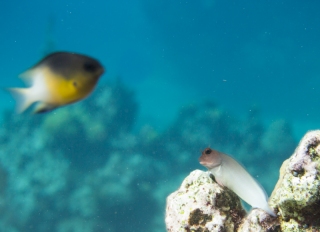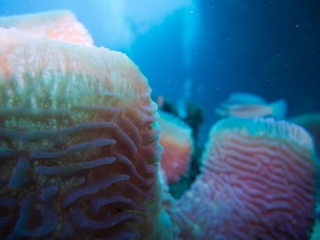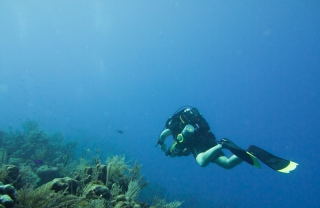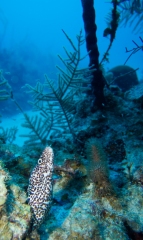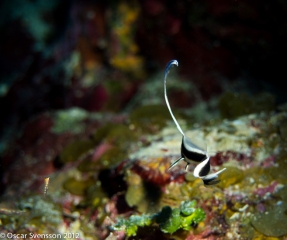Have you heard it? If you dive with bubbles I doubt it. The contrast between diving open and closed circuit can be appreciated on a whole other level when diving in waters rich in life like the ones surrounding the Cayman Islands. This contrast is what put a smile on my face that nearly made me flood my loop. The difference between having fish wince every time you breathe out to having them actively swim up and check you out.
From the Dominican Republic I flew to Grand Cayman and arrived to the Cobalt Coast Dive Resort where Divetech resides. With room, restaurant, divecenter and ocean all within a 100m radius it is easy to go diving, so easy you almost feel guilty about it… Almost.
I had been invited by the owner Nancy Easterbrook to come here to spend some time to work on my rebreather diving in a good environment. To say that Divetech is rebreather friendly is a bit of a understatement. Several of the staff are active CCR divers and the dive manager Steve is a no less than a rebreather instructor trainer. The center has several different machines for rent and the possibility to train people on them. For a rebreather diver to come here is a bliss with everyone being used to the machines and understanding the special needs that may exist. Actually once every year a week is dedicated to rebreather only during the event inner space when manufacturers come to show of their latest toys and likeminded divers can meet and dive together regardless of level. This has become a near must for some divers that come back year after year.
During my stay I had a good chance to enjoy a number of the divesites both on the north shore and on the west. The drama of the topography is quite something with very steep drop-offs close to land. Swimming along the reef at thirty meters, looking up to watch the waves and then looking down seeing just the wall thirty meter more downwards before it get dark and knowing that the bottom wont be reached for maybe 1300m. The reef had different character in different parts making the diving interesting and my favorites where some parts where it folded and formed little canyons and swim troughs. Most days we went out with the boat in the morning after breakfast. I was happy to see that even Steve as the manager joined in guiding dives, showing his top spots. It made me even happier to see someone like him who has been working with diving for years and years and many of them in the Caymans still surfacing from a dive absolutely jumping up and down with excitement over the things he had seen. That right there shows me there is a future working in the industry.
I also got to dive the Kittiwake wreck that was sunk two years ago after years of work by Nancy Easterbrook to bring the ship there and get all the relevant permits etc. The ship that used to be a submarine salvage vessel, sits perfectly upright in the sand and has been prepared for easy penetration. It is an absolute blast to swim from room to room and up staircases in a wild chase. So far not that many things that grow on the wreck but a lot of fish is starting to move in. Give it a few more years and it will be covered in life.
One of my best dives while here was on the house reef of Lighthouse point together with On drej from the staff. We each donned a bubblefree machine, grabbed our cameras and decided to swim until we got bored, cold or the memory card ran out. The silence and peacefulness when there is only CCRs in the water at the same time is great and since we always breathed the best mix for the depth our no decompression times compared to regular scuba was amazing. Had we done the same dive on nitrox we would have had an hour of mandatory decompression instead of just the normal safety stop we had now. In the end lunchtime called us back to land but not before we had spent hours on the reef.
I have spent time diving many different styles of equipment and configurations and especially during this scholarship but few things feel so right as CCR diving. It feels like what scuba should be and what Cousteau really meant with the silent world.
